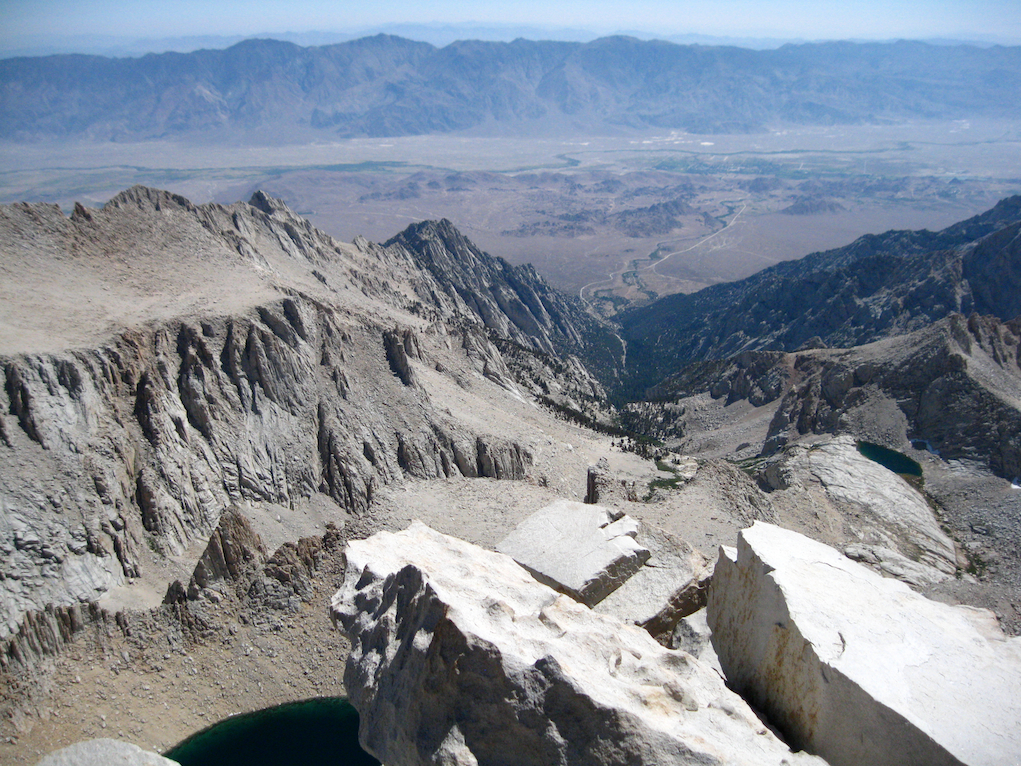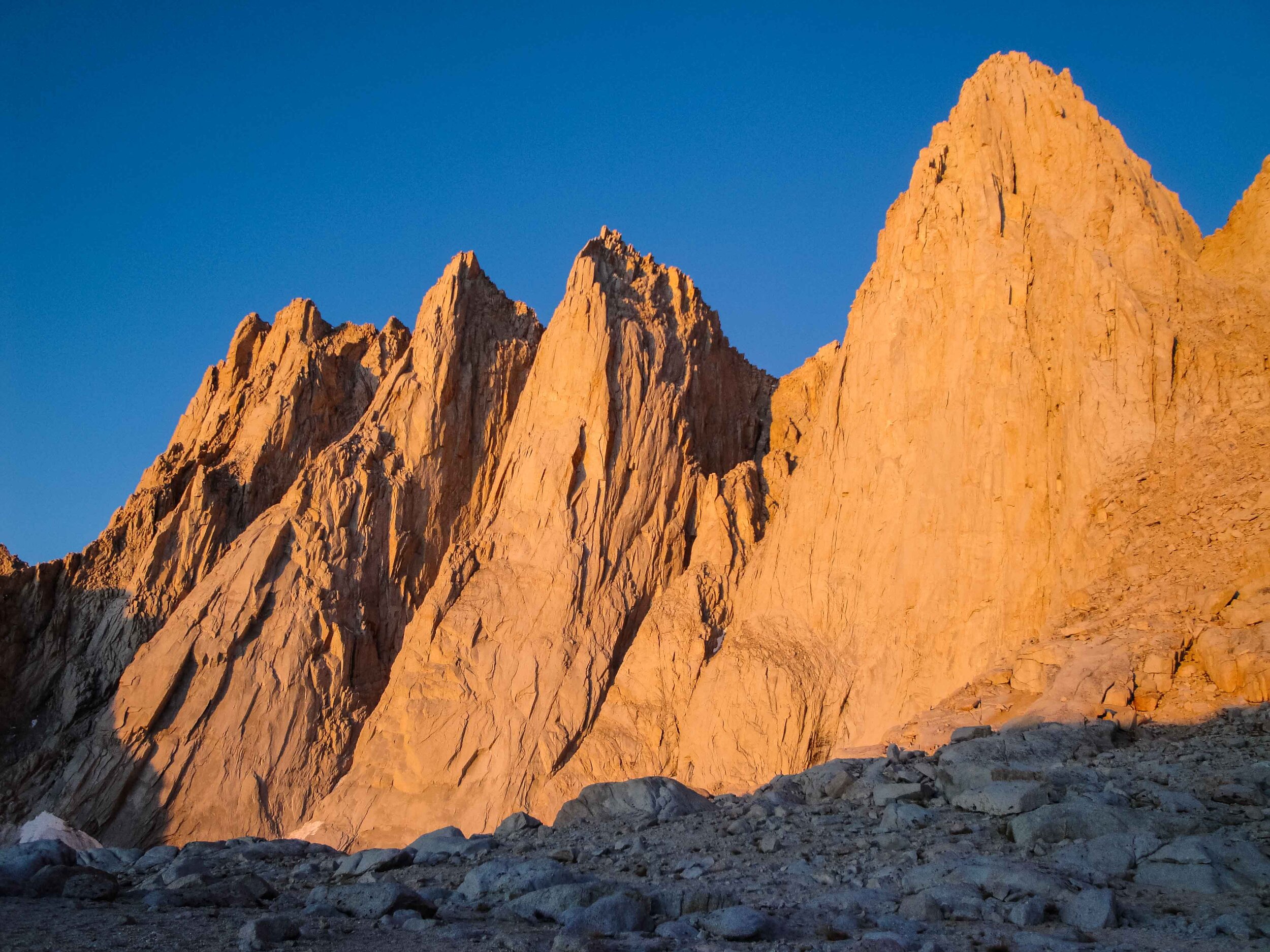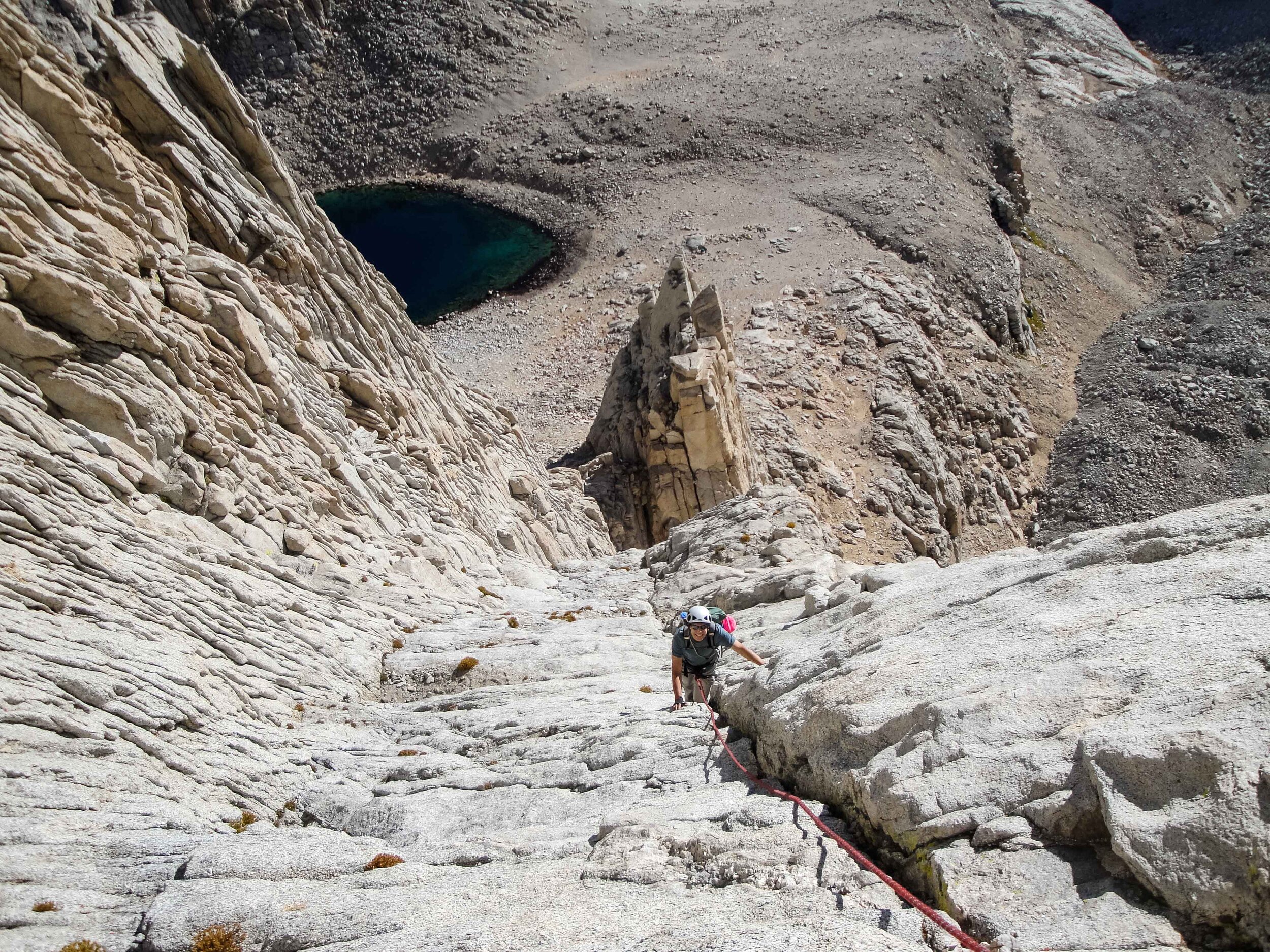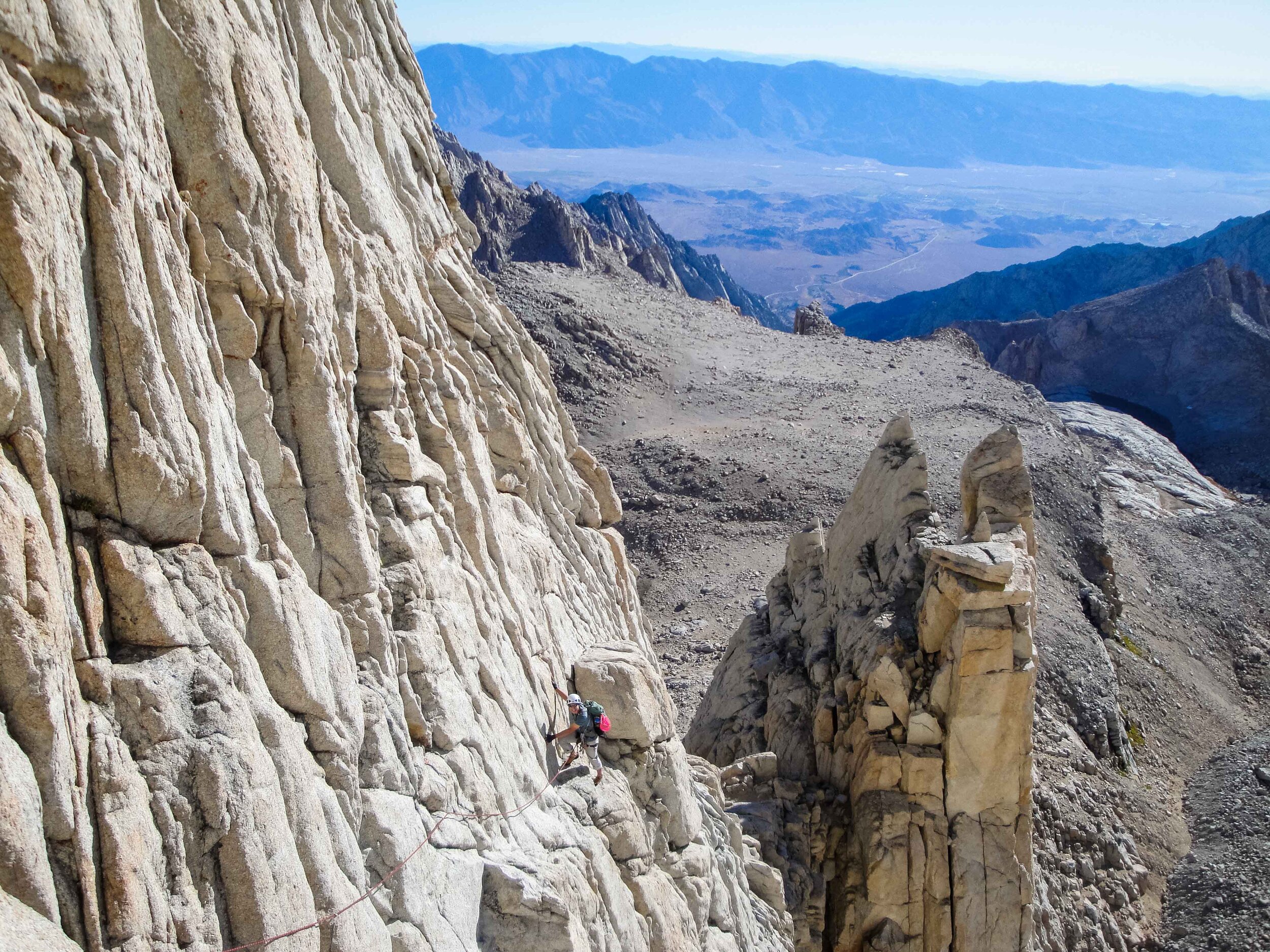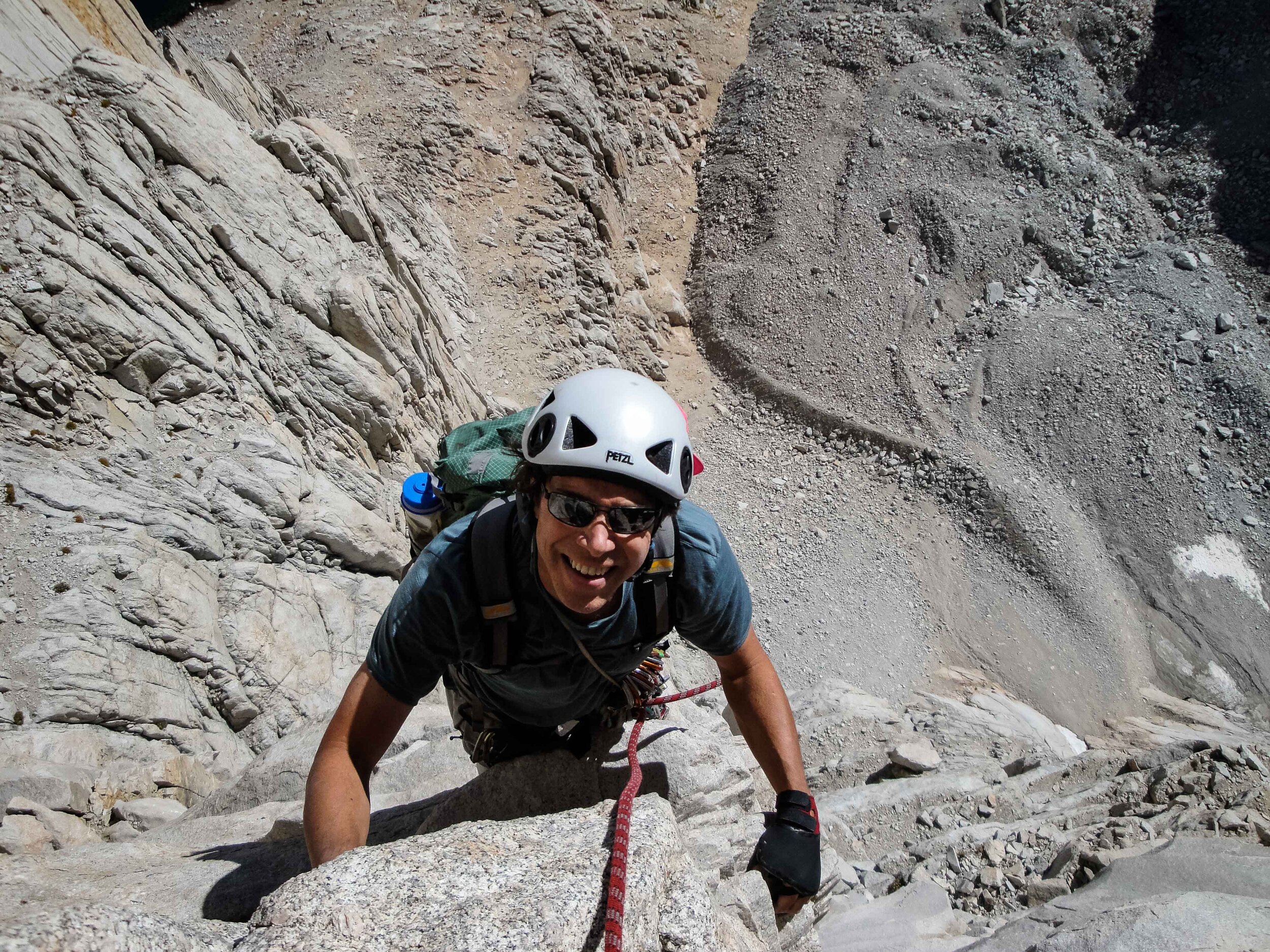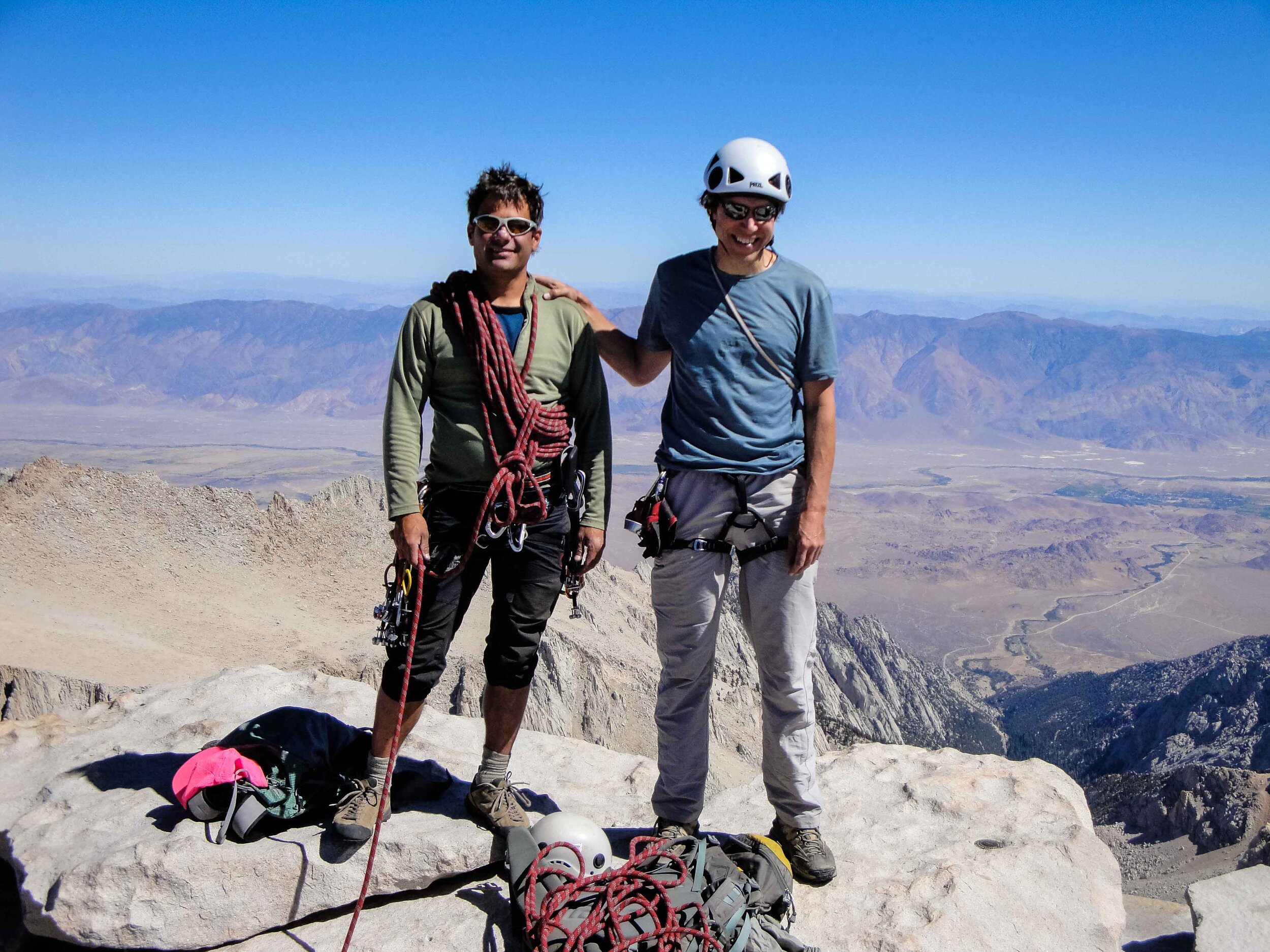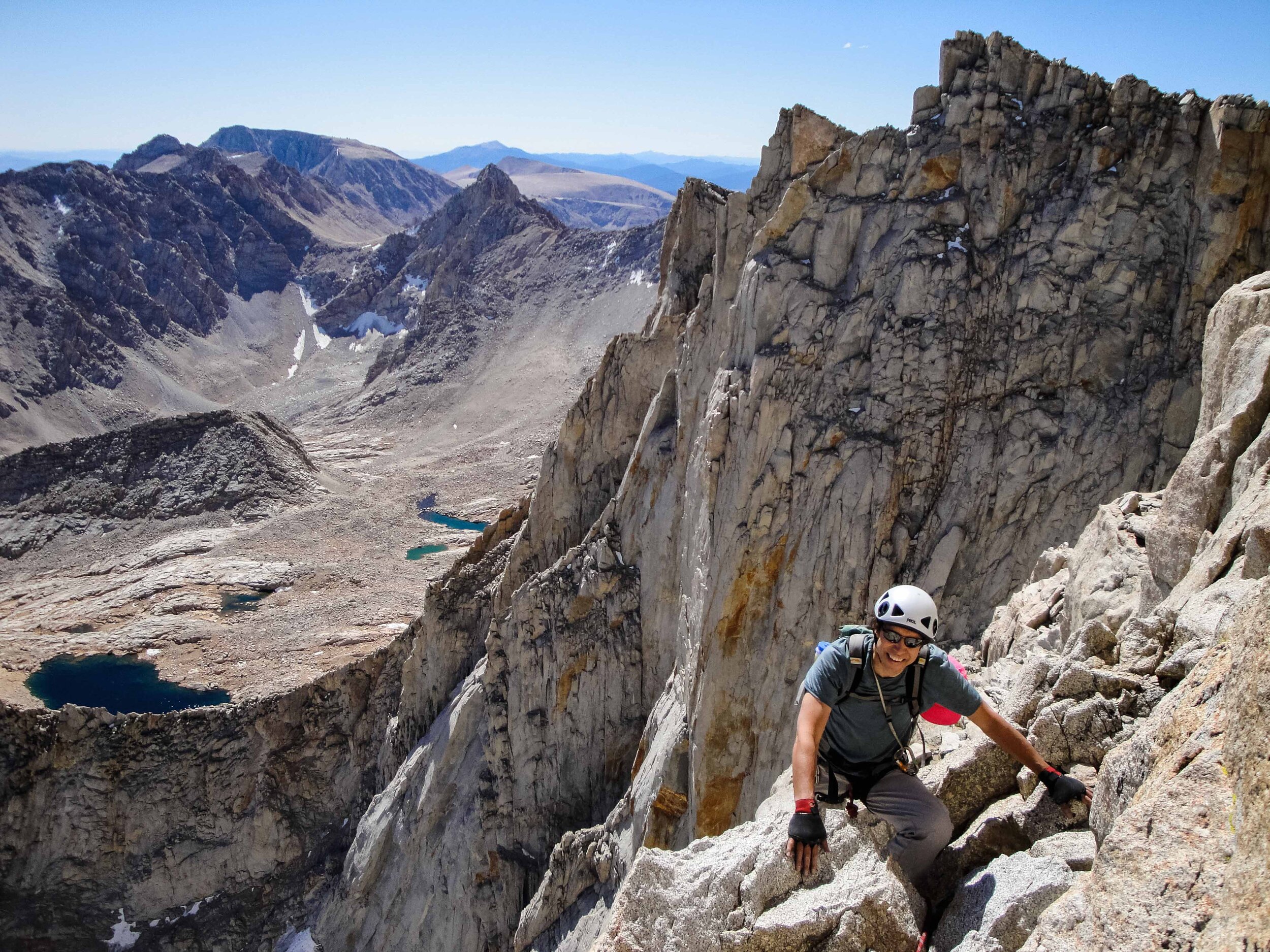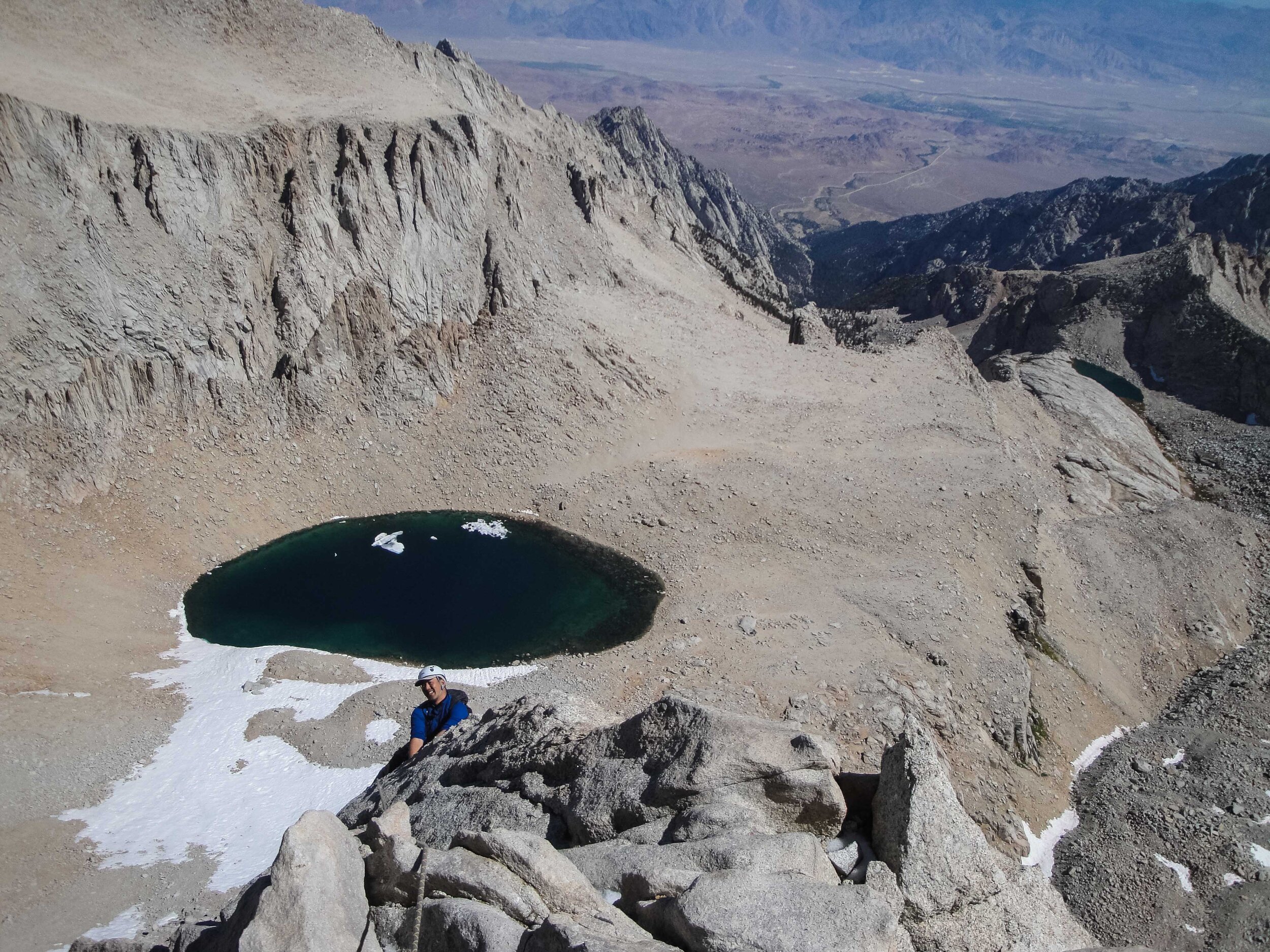MT. WHITNEY EAST FACE & EAST BUTTRESS CLIMB
5.7 - 5.8
Sierra Nevada- 3 days
California Alpine Guides
a division of International Alpine Guides.
MT. WHITNEY EAST FACE / EAST BUTTRESS CLIMB OVERVIEW
Mt. Whitney has two fantastic and classic alpine rock climbs up its East Face. The classic East Face route (5.7) and the sustained East Buttress Route (5.7). While different in character both are excellent climbs that end right on the summit of Mount Whitney. The East Face of Mt. Whitney was first climbed in 1931 by a strong team of famous pioneering Sierra Nevada climbers that included Norman Clyde, Jules Eichorn, Glen Dawson, and Robert Underhill.
We take three days to climb either the East Face or East Buttress route on Mt. Whitney. This allows for plenty of time to acclimate and climb the rock routes (Private two-day climbs are available for those with plenty of experience and who are in excellent physical shape). On day one we establish a base camp partway up Mt. Whitney along a beautiful alpine lake, either Upper Boy Scout or Iceberg Lake. The next day, it’s an early “alpine start” so we can climb Mount Whitney in the morning hours. The rock climbing is mostly blocky crack climbing with some easy sections in between the more technical moves. Both climbs end right on the summit of Mt. Whitney. We descend the mountaineer’s route back to our camp for a good nights rest before hiking out the next morning back to Whitney Portal
What are the differences between the two routes? Well, they are both excellent and both are about the same difficulty. However, the East Face is the historical classic line on Mt. Whitney and tends to meander a bit more. It also has a few very exposed and classic sections such as the famous “Fresh Air Traverse”. The East Buttress of Mt. Whitney on the other hand is a bit more sustained and is a more direct line to the top. It does have more 5th class climbing on it and affords an easier retreat if bad weather rolls in. It’s also a bit shadier. We usually make the decision on which one to climb after assessing the conditions and our guest’s goals.
For technical rock climbers, it’s a great way to climb to the top of the highest peak in the contiguous United States. Come climb the East Face or East Buttress on Mt. Whitney with us this summer.
Food & Equipment
We provide breakfast & dinner prepared by your guide and backcountry chef from the time we meet till we part ways. We like to call our food "backcountry gourmet".
To make your trip easier for you we provide all of the gear you will need at no extra cost. We provide high-quality backpacks, sleeping bags and pads, any technical gear, trekking poles, headlamps, and eating utensils if needed. We also provide tents, all group cooking gear, a first aid kit, and water purification for the group. Our guides carry emergency two-way satellite communications devices at all times.
EXPERIENCE & PHYSICAL FITNESS REQUIREMENTS
Previous rock climbing experience required. You must be able to quickly follow up 5.9 crack climbs
Previous backpacking experience highly recommended.
Previous off trail hiking experience required.
Excellent physical condition required.
Rock climbing on Mt Whitney above 14,000 ft is strenuous…you must train accordingly! Please feel free to contact us for any training recommendations.
Curious how to rate your physical ability? Check out our Physical Ability Page
DATES
Custom dates available late June though October
COST:
Custom rates - contact us
We include all technical gear & camping gear at no extra cost! No hidden rental fees.
INCLUDES
Breakfast and dinner prepared by your guide while in the field.
Professional local mountain guides trained or certified by the AMGA & certified in emergency wilderness medicine, food handling & Leave No Trace Principles & trained in local natural history.
Backpacks, sleeping bag and pad, technical gear if needed such as an ice axe and crampons, trekking poles, and eating utensils if needed. ($25 cleaning fee for using our sleeping bags).
Tents, all group camping gear and permits.


